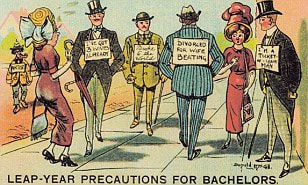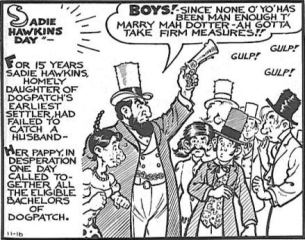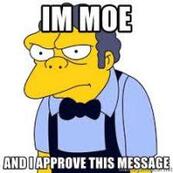
Instead, we accumulate those hours for four years and add a day to February. A simple concept, and it works pretty well.
WHO FIGURED THIS OUT?
In ancient times, all cultures created ways to track the year, usually using the seasons, the sun, and the moon. Probably the oldest is the Chinese lunar calendar which doesn’t number years, but counts in 60-year cycles, divided into five 12-year cycles named after different animals.
Emperor Julius Caesar

But, alas, the Julian calendar was still off by 11 minutes and 14 seconds. A small amount, but those minutes added up. In 1582, under Pope Gregory XIII, a correction was made and eleven days were dropped. And I believe the Gregorian calendar we use today is considered almost completely accurate with the additional day in February.

Most of us associate Leap Day (February 29) with the tradition of women proposing marriage. According to Louis J. Boyle, a professor of medieval literature and Arthurian legend at Carlow University, Leap Day comes with a variety of medieval Urban Legends which are undocumented.
Artist Donald McGill
Photo source: dailymail.co.uk/news/article-2107684
One suggests the origin of Women’s Privilege comes from St. Brighid, a patron saint of Ireland who died around AD 525 and is known to have founded a convent in the Kildare region of the country. Named after the Celtic goddess Brigid (Brighid) she was born to a Druid king and his Christian wife in the exact moment the sun rose so that a beam of radiant light burst around her forehead like a flame. She is credited with a number of miracles. Goddess Brighid by Lisa Iris
▼Photo source: https://journeygoddess.wordpress.com/
| Over time, stories of the patron saint intertwined with those of the Celtic goddess Brighid who was the goddess of fire (the forge and the hearth), poetry, healing, childbirth, and unity. | |

In one version of the tale, after the deal was cut, unexpectedly (because it was a leap year and St. Bridget was single), she got down on one knee and proposed to St. Patrick on the spot. He refused, of course, bestowing on her a kiss and a beautiful silk gown in consolation.
According to Boyle,
"The tradition was that if the man said 'no,' he had to provide a gift to the woman. Traditionally, [the gifts] were a garment or money. Sometimes the tradition reads there was some penalty designated or the woman had the right to say, 'This is what you have to do for turning me down.' "
In another legend, Women’s Privilege resulted from a law passed by Scottish Parliament in 1288, of which one of the many quoted versions reads:
“It is statut and ordainit that during the reine of hir maist blissit Magestie, ilk maiden ladye of baith highe and lowe estair shale hae libertie to bespeak ye man she likes; albiet, gif he refuses to tak her till be his wif, he sall be mulcit in ye sume of ane hundredth poundis or less, as is estait mai be, except and alwais gif he can mak it appear that he is betrothit to ane other woman, then he shall be free.”
Because this text cannot be sourced (or read, for that matter – at least by me), it was considered suspect, even by the Victorian authors who quoted it. The only authority for the statement is the Illustrated Almanac' for 1853, and scholars believe the statue was “manufactured” as a kind of joke.
Queen Margaret of Scotland is also given credit for this 1288 law (even though in 1288 she was five years old and lived in Norway). In this version, the law required that fines be levied if a marriage proposal was refused by the man.
The earliest verified reference in the English language is a couplet from an Elizabethan-era stage play called The Maid’s Metamorphosis, first performed in 1600, a leap year.
TimeandDate.com indicates that Leap Day is known in some places as Bachelors’ Day”, an Irish tradition allowing women (on Leap Day) to initiate dances and propose marriage. If the proposal was refused the man was expected to buy the woman a silk gown or, by the mid-20th century, a fur coat. The tradition is supposed to originate from a deal that struck with Saint Patrick.
In the United Kingdom, a woman was allowed to propose marriage on Leap Day and if refused the man was obliged to buy her new gloves on Easter Day (some sources say 12 pairs of gloves). In some areas a woman could propose for the entire leap year.
SADIE HAWKINS DAY
The American version on Bachelor’s Day arrived on the scene as Sadie Hawkins Day, originating from Al Capp’s cartoon series “Lil Abner” in the 1930’s.

As the story went, the mayor Hezekiah, brought together all the bachelors around Dogpatch and declared “Sadie Hawkins Day” and ordered a race of eligible bachelors with Sadie chasing after them… when a man was caught, he would be legally bound to marry her. The other town spinsters loved this idea so much that they declared Sadie Hawkins Day a mandatory annual event which lasted as long as the cartoonist – 40 years.
If you grew up in that era, you probably experienced the traditional high school Sadie Hawkins Day dance when the girls invited the boys, or the many university events. The whole idea was wildly popular. While there is no specific day or month for Sadie Hawkins Day, Leap Day is as good as any, but it is celebrated usually in the fall. Sources of Photo: mentalfloss.com/article/29084

“His reputation for seducing and even sexually assaulting aspiring actresses, including a young Goldie Hawn and a distraught and disheveled Grace Kelly,” along with sleeping with the college girls he met on his Sadie Hawkins Day tours preceded him.”
LEAPING BABIES
Persons born on Leap Day used to be called “leapings” or “Leapers”. There’s actually a society “leapings” can join. https://www.leapyearday.com/honor-society-of-leap-year-day-babi
The chance of being born on February 29 is approximately 1 in 1,461. But if that’s your birthday, you can celebrate it on February 28. At one time it was once thought that leapling babies would inevitably prove sickly and "hard to raise," though no one remembers why. Today, there is still a problem with leap day babies and medical records.
□
Author R. Ann Siracusa
Converting Oxygen to Carbon Dioxide For Over Three Quarters of a Century
Resources
http://www.timesledger.com/stories/2012/8/hellman_all_2012_02_23_q.html
http://inventors.about.com/cs/inventionsalphabet/a/leap_year.htm
http://www.terracestandard.com/community/139765403.html
http://www.toledoblade.com/Mary-Alice-Powell/2012/02/19/Leap-Day-2012-is-nearly-upon-us.print
http://www.cleveland.com/lakewood/index.ssf/2012/02/lakewood_students_born_on_feb.html
http://www.post-gazette.com/pg/12054/1211860-55.stm#ixzz1nQB9feFv
http://urbanlegends.about.com/od/historical/a/leap_year.htm
http://en.wikipedia.org/wiki/Leap_year
http://www.timeanddate.com/date/leap-day-february-29.html
http://www.goddessgift.com/goddess-myths/celtic-goddess-brigid.htm
http://www.annistonstar.com/view/full_story/17573876/article-A-leap-forward?instance=home_opinion
https://www.nytimes.com/2016/02/28/fashion/weddings/women-proposing-leap-year.html
https://reason.com/2013/02/26/the-wizard-of-dogpatch-2/
http://blog.bridgemanimages.com/leap-year-2016-if-she-likes-it-she-can-put-a-ring-on-it/
https://journeyingtothegoddess.wordpress.com/2012/02/01/goddess-brigit/
https://www.monasteryicons.com/product/st-brigid-icon-396/irish-gifts-and-decor
https://www.irelandbeforeyoudie.com/leap-day-proposals-the-story-behind-the-leap-year-tradition-in-ireland/
https://www.nytimes.com/2016/02/28/fashioan/weddings/women-proposing-leap-year.html












 RSS Feed
RSS Feed